If you haven't guessed from my avatar and general crankiness, I'm one of the older employees at SparkFun. This leads to occasional "get off my lawn" moments where I'll tell anyone within earshot how easy SparkFun is making electronics, especially compared to the "good" old days. Here's an example:
Halloween was my favorite holiday when I was a kid (full disclosure: it still is). Every year my front lawn gained more and more projects to entertain, in my mind at least, the local neighborhood. Looking back at what I did to her yard every year, I'm in awe of my mother's patience and restraint.
Photo courtesy of soundfromwayout
But, and here's where I start waving my cane around, it's hard to overstate how tough it was to do anything more complicated than glowing eyes and, if you could find decent motors, crank ghosts. For one thing, the internet as we know it didn't exist yet, leaving books, magazines and the local Radio Shack as my only sources of information. I would have loved "school" to be on that list, but pre-college electronics education was much more rare than it thankfully is today. Occasionally you'd luck across an article on how to make things like SN76477-based noisemakers, but these were complicated to build and spooky only in a bad sci-fi sort of way.
Something I desperately wanted for Halloween but could never quite achieve was realistic, interactive sound effects. Sound is a major part of any spooky experience (try watching a horror film with the sound off), but in the pre-digital era it was hard to do anything beyond a simple background soundtrack of wind, thunder and an occasional werewolf howl, playing on the family stereo with the speakers pointed out the windows. I remember trying to make triggered sound effects by using a relay to start and stop a cassette deck... This failed miserably; even using a cassette of repeated sound effects and a 555-based pulse-stretcher to try to play one on demand, it would inevitably get out of sync, which was more humorous than horrifying.
Fast forward many years to 2009, when SparkFun released the MP3 Trigger. When I first read about this board my eyes and ears lit up. The MP3 Trigger makes it almost trivially easy to have simple sensors trigger the playback of high-quality sounds, allowing anyone to create the kind of interactive experiences I could only dream of when I was a kid.
The MP3 Trigger and its descendants were designed by Jamie Robertson who was, among many other things, director of R&D at Walt Disney Imagineering. Jamie designed the MP3 Trigger because he had a recurring need for a tool that could play sound files on demand for the art installations and museum displays he was designing, and like the best SparkFun products, it turned out that many other customers had those needs as well.
The MP3 Trigger is wonderfully straightforward. It has a long row of trigger inputs, each with a handy ground pin beside it, that will accept both switch closures and logic (high/low) signals. It also includes a Micro SD card socket for your audio files, several options for power in and audio out, and even a navigation switch allowing it to function as a Walkman-style audio player – for those old enough to know what a Walkman is.
Out of the box, the MP3 Trigger will play a numbered sound file off the Micro SD card when the matching input is triggered, but you can easily alter this behavior to allow looping, restarting, etc. by adding an optional text file to the SD card.
For even more customization, you can control the MP3 Trigger remotely through its serial port. The MP3 Trigger understands commands for playing next, previous and specific tracks, changing volume, etc. You can easily connect an Arduino to the MP3 Trigger to synchronize a loud snarl with a servo operating a monster's jaw, or flash superbright LEDs at the same time as the sound of thunder. It's Halloween on a board.
The MP3 Trigger solves a lot of problems for a lot of people. But it can only play one sound at a time, a limitation of the technology available when it was designed. Jamie didn't rest on his laurels, and in 2014 he released a new board with new capabilities: the WAV Trigger.
Instead of using a dedicated audio-decoding chip like the MP3 Trigger, The WAV Trigger does everything in software. As its name implies, it gave up the ability to play MP3s (which had licensing restrictions and required quite a bit of processing power), but in exchange it gained the ability to play up to 14 stereo sounds simultaneously. It also added MIDI compatibility, a slew of new serial commands and a bunch of new trigger configuration options. But even out of the box, the board is as easy to use as the MP3 Trigger was before it.
When the WAV Trigger came out, I tested its new capabilities by putting together a quick Halloween installation at SparkFun. I configured one trigger to continuously loop a background wind-and-rain sound effect, another to loop an occasional wolf howl using an audio file created in Audacity, and hooked up a handful of PIR motion sensors to other triggers to play various shrieks and snarls when anyone walked by. It mixed all these sounds together perfectly, which is impressive for a board less than 3 inches square that wasn't even hooked up to a microcontroller. When connected to an Arduino and external amplifier, the WAV Trigger can easily handle a whole yard's worth of Halloween audio.
As if all of the above wasn't enough, in 2017 Jamie collaborated with SparkFun's in-house audio expert Byron Jacquot to create the Tsunami "Super" WAV Trigger.
Based on a considerably more powerful microcontroller than previous boards, the Tsunami can play up to 32 mono or 18 stereo sounds simultaneously. The Tsunami also adds nifty new features such as an audio input that can be mixed with the outputs as desired, and new "attack" and "decay" commands to automatically fade sounds in or out.
But the best feature of the Tsunami is that it has eight audio outputs, and any audio track can be routed to any output. If you've ever dreamed of a snarl coming from a far corner of your yard, moving to different locations and suddenly ending up right behind you (who hasn't?), the Tsunami is the board for you. And because Jamie is always working on updates (which are easily installed from the Micro SD card), you can count on the Tsunami doing even more in the future.
These products are great examples of what happens when advances in microcontroller technology meet the rapidly falling price of digital storage. What once required a small fortune's worth of analog equipment can now be done with a small board and a Micro SD card. You kids today!
They're also a great example of SparkFun's philosophy of putting things on the storefront that we're excited about using in our own projects. Just like you, we're artists, makers and engineers who know how to have fun, and we're always on the lookout for game-changing products like the MP3 Trigger and its descendants that will help take all of our projects to the next level.
So have a happy Halloween, hopefully enhanced with a bit of clever technology and some scary sound effects. And let us know in the comments what bumps in the night you're building this year!
Photo courtesy of Chris Yarzab
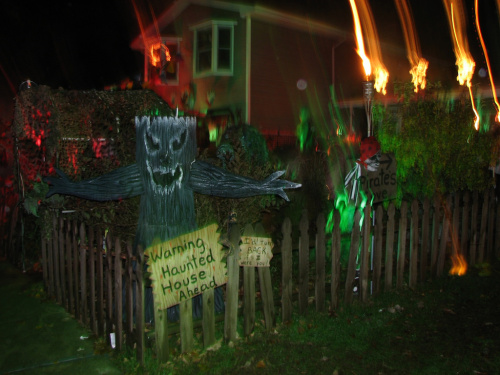
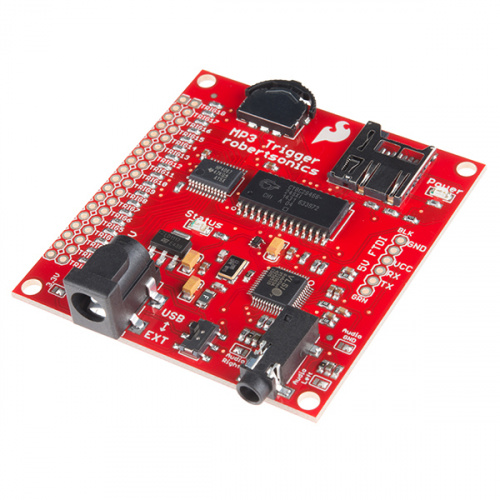
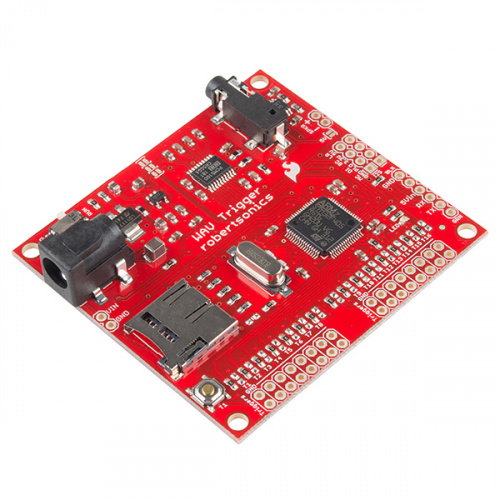
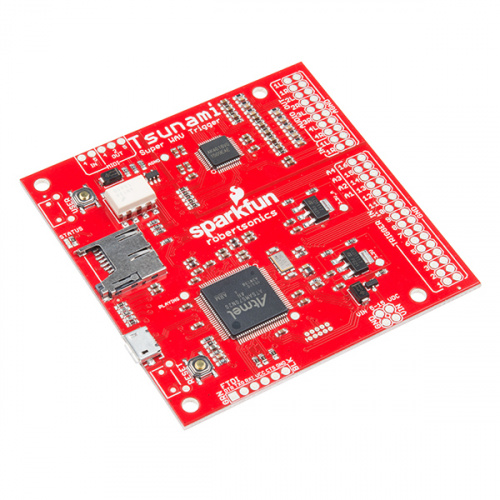
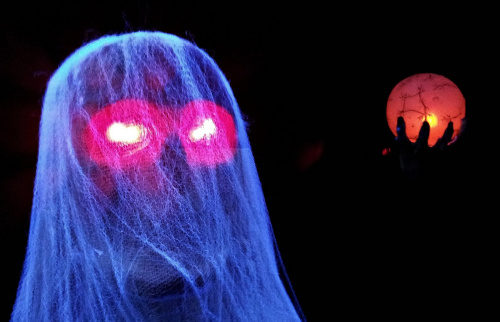






The MP3 Trigger board is a great thing. I used it as the basis for my Zoltar Booth Halloween 'Costume', sorry no segway here. I built a control board using the arcade push buttons and kids could use the arcade button on the front of the booth to trigger a sound. Although the outside button interrupted the currently playing sound effect, added a switch to disconnect the outside button. Wish I could upload a pic of it. Happy Halloween!
I used the mp3 shield in my kid's costume this year! https://www.youtube.com/watch?v=xH54Vje-KZE
He provides pretty good support for these in the Sparkfun Forum as well.